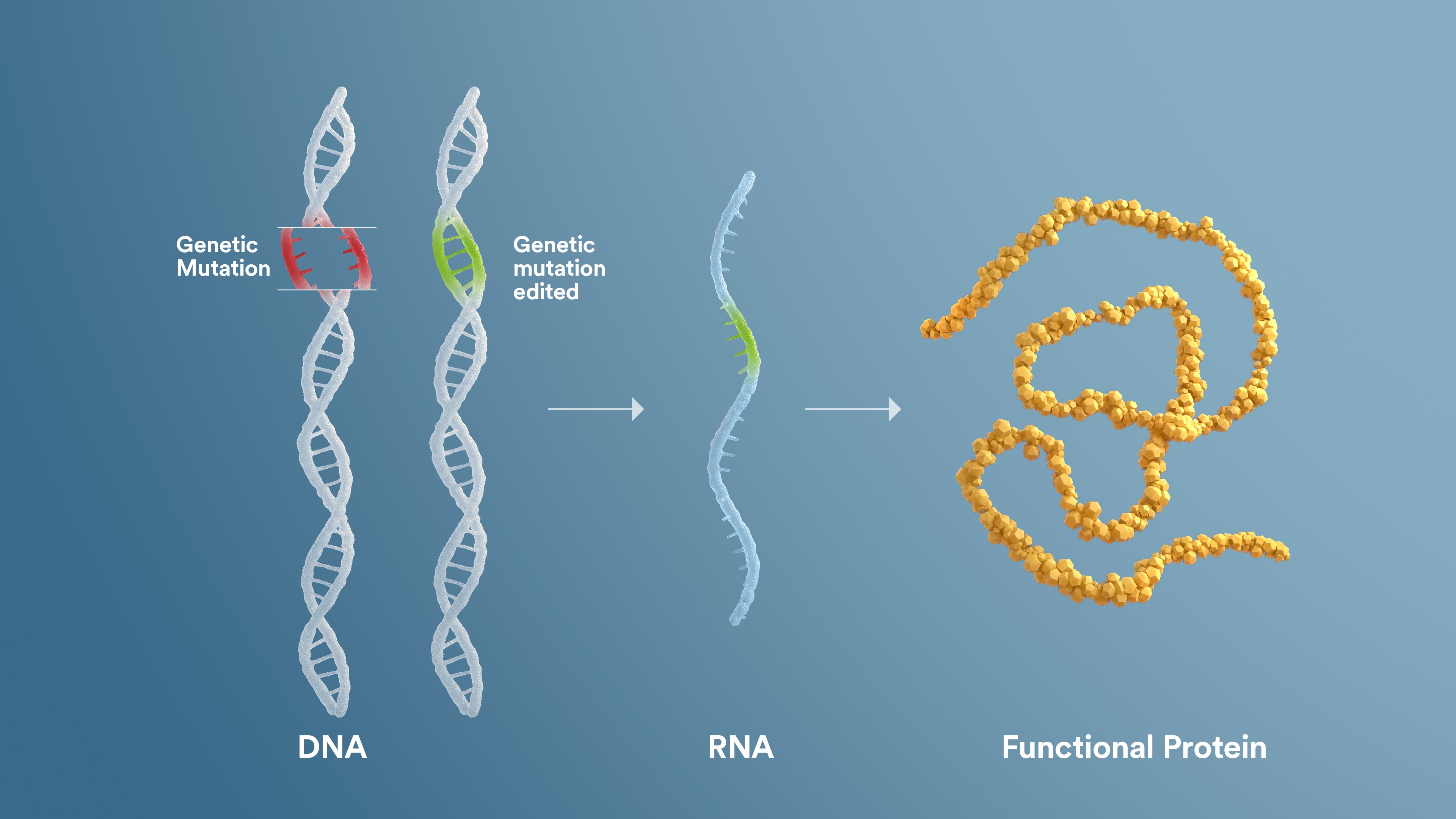Complete Gene Insertion: The Promise Of Advanced Gene Editing Technology

Table of Contents
Mechanisms of Complete Gene Insertion
Complete gene insertion relies on sophisticated methods to deliver and integrate functional genes into a target genome. Two primary approaches dominate this field: viral vectors and non-viral methods.
Viral Vectors
Viral vectors, particularly adeno-associated viruses (AAVs) and lentiviruses, are widely used for gene delivery due to their efficient transduction capabilities. These viruses have been modified to remove their pathogenicity, leaving behind their natural ability to infect and deliver genetic material into cells.
- How they work: Viral vectors utilize the virus's natural mechanisms to enter cells and integrate their genetic payload, which includes the desired gene, into the host cell's genome. This integration allows for long-term expression of the inserted gene.
- Advantages: Viral vectors offer high transduction efficiency, meaning they successfully deliver the gene to a large number of cells. Certain viral vectors can target specific cell types, enhancing the precision of gene insertion.
- Limitations: Viral vectors have limitations, including packaging capacity (the size of the gene they can carry), potential immunogenicity (triggering an immune response), and the possibility of insertional mutagenesis (inserting the gene in an undesirable location in the genome).
- Examples: AAV vectors have shown success in clinical trials for various genetic diseases. Lentiviral vectors are frequently used in research settings for their ability to integrate genes into dividing cells.
Bullet points:
- AAV serotypes and their tissue tropism (different AAV types target different tissues)
- Lentiviral integration and long-term expression (integration ensures persistent gene expression)
- Challenges in viral vector design and optimization (improving safety and efficiency remains an active area of research)
Non-Viral Methods
Non-viral methods offer an alternative to viral vectors, addressing some of their limitations. These techniques include CRISPR-Cas systems, Transcription Activator-Like Effector Nucleases (TALENs), and lipid nanoparticles.
- Mechanisms: CRISPR-Cas systems utilize guide RNA to target specific DNA sequences, allowing for precise gene insertion. TALENs function similarly, using engineered proteins to target and cut DNA. Lipid nanoparticles encapsulate the gene and facilitate its delivery into cells.
- Advantages: Non-viral methods often exhibit reduced immunogenicity compared to viral vectors. They also generally have a larger cargo capacity, allowing for the delivery of larger genes or multiple genes simultaneously.
- Disadvantages: Non-viral methods generally have lower efficiency than viral vectors, and off-target effects (unintended edits to the genome) can be a concern.
- Examples: CRISPR-Cas has shown remarkable success in various gene editing applications. Lipid nanoparticles are increasingly used for delivering mRNA vaccines and other therapeutic molecules.
Bullet points:
- CRISPR-Cas efficiency and specificity (improving accuracy remains a key challenge)
- TALEN design and optimization (complex design process requires expertise)
- Lipid nanoparticle delivery and cellular uptake (optimizing delivery to target cells is crucial)
- Comparison of viral vs. non-viral methods (each approach has its strengths and weaknesses)
Applications of Complete Gene Insertion
The potential applications of complete gene insertion span a wide range, with significant implications for medicine, agriculture, and beyond.
Gene Therapy for Monogenic Disorders
Complete gene insertion holds enormous promise for treating monogenic disorders – diseases caused by a single gene defect. By precisely inserting a functional copy of the faulty gene, this technology aims to restore normal protein function and alleviate disease symptoms.
- Restoration of Function: Complete gene insertion offers the potential to correct the root cause of many genetic diseases, unlike symptomatic treatments that only manage symptoms.
- Clinical Trials: Many clinical trials are underway investigating the use of complete gene insertion to treat conditions such as cystic fibrosis, hemophilia, and various forms of muscular dystrophy. Early results are promising in several cases.
- Challenges: Delivering the gene to the appropriate cells and achieving sufficient expression levels can be challenging for different diseases and tissues. Immune responses and off-target effects pose additional hurdles.
Bullet points:
- Specific examples of diseases targeted by complete gene insertion (e.g., beta-thalassemia, sickle cell anemia)
- Success rates and limitations in clinical trials (efficacy varies depending on the disease and delivery method)
- Ethical considerations surrounding gene therapy (informed consent, equitable access, germline editing)
Beyond Disease Treatment
The applications of complete gene insertion extend beyond human health. It holds significant potential for improving agriculture and livestock production.
- Enhanced Crops: Complete gene insertion can be used to introduce genes that enhance crop yields, improve nutritional value, and increase resistance to pests and diseases.
- Disease-Resistant Livestock: Gene editing techniques can enhance animal health and productivity by introducing genes that provide resistance to diseases.
- Economic and Societal Implications: The widespread adoption of genetically modified crops and livestock could have profound economic and societal impacts, affecting food security, agricultural practices, and global trade.
Bullet points:
- Examples of genetically modified crops and livestock (e.g., herbicide-resistant soybeans, disease-resistant cattle)
- Potential benefits and risks of these applications (increased yield vs. potential environmental impact)
- Regulatory challenges in GMO development (stringent regulations and public perception)
Challenges and Future Directions of Complete Gene Insertion
Despite its promise, complete gene insertion faces several challenges that require further research and development.
Off-Target Effects and Safety Concerns
Off-target effects – unintended edits to the genome – are a major concern in gene editing. Minimizing these effects is crucial to ensuring the safety of complete gene insertion therapies.
- Risk Mitigation: Researchers are actively developing strategies to improve the specificity of gene editing tools and minimize off-target effects. Rigorous safety testing and quality control are essential.
- Ethical Considerations: The ethical implications of gene editing technologies are far-reaching and demand careful consideration. Clear guidelines and regulations are necessary to ensure responsible development and use.
Bullet points:
- Methods for minimizing off-target effects (improved guide RNA design, enhanced Cas enzymes)
- Strategies for improving the safety and specificity of gene editing tools (e.g., base editing)
- Ethical guidelines and regulations for gene editing research (international collaborations and oversight)
Improving Efficiency and Delivery
Improving the efficiency and targeted delivery of complete gene insertion remains a major focus of ongoing research.
- Novel Technologies: Researchers are developing new gene editing tools and delivery systems to enhance the effectiveness of complete gene insertion. This includes advancements in CRISPR-Cas technology, novel viral vectors, and the use of nanotechnology.
Bullet points:
- Advances in CRISPR-Cas technology (e.g., base editors, prime editors)
- Development of novel viral vectors (e.g., improved AAV serotypes)
- Applications of nanotechnology in gene delivery (targeted drug delivery systems)
- Future prospects for complete gene insertion (personalized medicine, advanced therapies)
Conclusion
Complete gene insertion represents a significant advancement in gene editing technology, offering tremendous potential for treating genetic diseases and improving human health. While challenges remain regarding safety and efficiency, ongoing research is paving the way for improved techniques and broader applications. The future of complete gene insertion is bright, promising revolutionary treatments for a wide range of conditions and transformative impacts across various sectors. Learn more about the ongoing advancements in complete gene insertion and explore its potential to revolutionize medicine and beyond.

Featured Posts
-
 Del Toros Pacific Rim Sequel Lost Storylines And Potential Futures
May 30, 2025
Del Toros Pacific Rim Sequel Lost Storylines And Potential Futures
May 30, 2025 -
 Realtors Home And Garden Show Returns To State Fair Park
May 30, 2025
Realtors Home And Garden Show Returns To State Fair Park
May 30, 2025 -
 Meningkatnya Kasus Suspek Campak Di Pohuwato Imbas Rendahnya Cakupan Imunisasi
May 30, 2025
Meningkatnya Kasus Suspek Campak Di Pohuwato Imbas Rendahnya Cakupan Imunisasi
May 30, 2025 -
 San Diego Weather Forecast Expect Fog Light Showers And Cooler Temperatures
May 30, 2025
San Diego Weather Forecast Expect Fog Light Showers And Cooler Temperatures
May 30, 2025 -
 Spesifikasi Dan Harga Kawasaki Ninja 500 Series Modifikasi Rp 100 Juta Ke Atas
May 30, 2025
Spesifikasi Dan Harga Kawasaki Ninja 500 Series Modifikasi Rp 100 Juta Ke Atas
May 30, 2025
